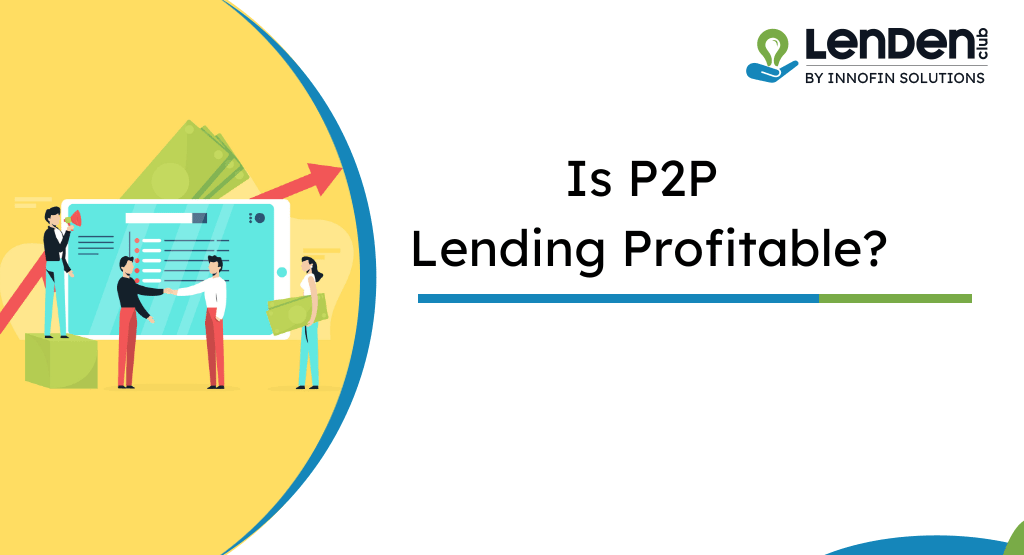Is P2P Lending Profitable in 2025?

Peer-to-peer (P2P) lending is revolutionizing the finance industry, providing a new way to access funds outside of a traditional banking system.
With the rapid adoption of digital technologies and innovative fintech solutions, P2P lending is poised for substantial growth in 2025.
So now the question remains, is P2P lending profitable this year?
Let’s get into some of the data and findings that answer the question.
What Makes P2P Lending Profitable?
For both borrowers and lenders, profitability in P2P lending depends on many factors:
- Investors Get Higher Returns: P2P platforms give annual returns which is much higher than traditional savings accounts or fixed deposits. It draws investors looking for higher returns in a low-interest-rate environment.
- Minimal Operational Expenses: P2P lending sites eliminate the need for traditional banks which reduces overhead costs. It allows them to pass on compelling interest rates to borrowers and attractive returns to lenders.
- Portfolios: Investors have the option to invest in numerous borrowers, reducing risks, and generating stable returns.
The Growth Report of P2P Lending in 2025
The global P2P lending market is expected to grow from $176.5 billion in 2025 to $1,380.80 billion by 2034 at a CAGR (compound annual growth rate) of 25.73%!
This growth is fueled by:
- Integration of Blockchain: Blockchain technology ensures secure transactions and reduces fraud risks through smart contracts.
- AI-Driven Credit Evaluation: Modern online lending platforms like LenDenClub now use AI to assess borrowers based on non-traditional data points like social behavior and transaction history, making loans accessible to a wider audience.
- Decentralized Finance (DeFi): DeFi innovations are revolutionizing the disbursement and management of loans, resulting in a more democratic access to credit.
Benefits for Borrowers and Lenders
Borrowers
- Easy to Access: P2P companies serve people and small-medium sized enterprises (SMEs) who do not access traditional credit because of a bad credit history or lack of collateral.
- Turn-around Time: Loan applications are processed faster compared to banks, with some platforms disbursing funds within hours.
Lenders
- Higher Yields: Investors receive higher returns than those available through traditional fixed-income investments such as bonds or savings accounts.
- Transparency: Blockchain-based systems enhance trust by providing immutable transaction records.
Challenges in 2025
P2P lending is profitable — but it does face several challenges:
- Risk of Default: Especially in a downturn, there is the risk that a borrower defaults, even with AI-driven risk assessments.
- Cyber Security Threats: The growth of digital platforms makes them increasingly susceptible to hacking and data breaches. What we need are strong cybersecurity measures.
- Regulatory Scrutiny: Governments across the globe are introducing stricter regulations on fintech platforms to enhance consumer protection, potentially leading to higher compliance costs.
Case Study: The Success Story of LenDenClub
LenDenClub, one of the India’s largest P2P lending platforms, the perfect example that may help you understand the profitability of this new online lending trend.
By FY20–21, the platform remained profitable, having disbursed ₹600 crore worth of loans (1,000% YoY growth relative to FY19–20).
The platform has onboarded more than 15 lakh borrowers and 4.5 lakh lenders and is disbursing close to ₹100 crore in loans per month and has one of the lowest non-performing asset (NPA) rates at 3.95% only. It shows that operational efficiency and demand can drive profitability.
Should You Invest in P2P Lending in 2025?
Although there are risks involved, P2P lending can offer a high return and potential diversification opportunities to investors.
With the emergence of advanced technologies, platforms have been developed to minimize risks and improve transparency.
Ultimately, prospective investors should conduct thorough due diligence on platform reliability, borrower demographics, and diversification practices before investing.
Frequently Asked Questions
Returns vary by platform but can range from 8% to 15% annually, depending on risk profiles and borrower selection.
It’s ideal for investors looking for portfolio diversification and willing to take calculated risks for higher returns.
Conclusion
In 2025, peer-to-peer lending proves profitable for both borrowers and lenders.
While challenges like default risks and cybersecurity threats persist, advancements in technology continue to mitigate these issues.
For those willing to navigate these risks strategically—P2P lending offers significant potential for financial growth.
So yes—P2P lending is not just surviving; it’s thriving in 2025.
Team LenDenClub
LenDenClub is India’s largest alternate investment platform which started operations in India in 2015. We have been helping investors diversify their investments beyond traditional investment instruments ever since.